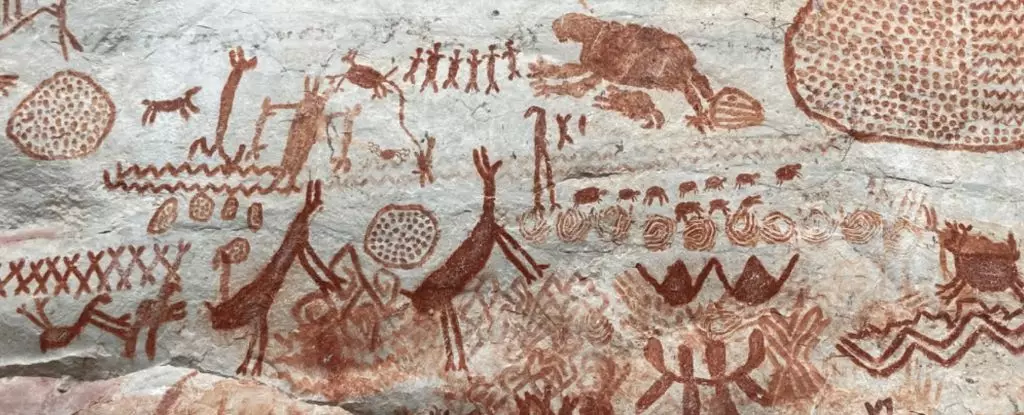In a remote region called Serranía de La Lindosa, Colombia, a significant discovery unfolds—a vast collection of ancient rock art that reveals a rich tapestry of Indigenous beliefs and cultural narratives. This intricate gallery of images, which has been meticulously documented by researchers in collaboration with Indigenous elders and ritual specialists, sheds light not only on the history of the Amazonian tribes but also their deep connection with the spiritual realm. For over a century, political instability and inaccessibility have obscured this precious cultural heritage, but recent efforts have brought these ancient stories into focus.
The success of this project is notably rooted in the partnership established between academics and Indigenous knowledge holders. Jamie Hampson, an archaeologist from the University of Exeter, eloquently captures this synergy, emphasizing the unique alignment between Indigenous narratives and the iconography found in the rock art. This connection is not merely academic; it embodies a profound validation of oral histories, which have often been marginalized by conventional historical discourse. Hampson’s observations reflect the critical importance of Indigenous perspectives in understanding the significance of these ancient works.
The rock art, predominantly composed of ochre pigments, features a variety of images, including anthropomorphic figures and intricate depictions of flora and fauna. Some motifs are believed to date back over 11,000 years, offering a glimpse into a culture that not only revered nature but also engaged with it in complex, spiritual negotiations. This negotiation was often represented through artistry—an offering to the spirit realms, manifesting a symbiotic relationship with the environment that sustained them.
The art of Serranía de La Lindosa portrays themes deeply embedded in animistic beliefs, where every creature and element of nature is interwoven with spiritual significance. The paintings vividly illustrate transformations, such as humans morphing into animals, emphasizing the fluidity between different forms of existence. Elders like Ismael Sierra articulate this belief, describing the mystical creatures featured in the art—beings that inhabit both the physical and spiritual worlds. The imagery serves as a testament to the Indigenous understanding of life as an interconnected web, where each spirit and creature plays a crucial role.
Moreover, the researchers documented how the local tribes enacted rituals to negotiate successful hunts and ecological sustainability. For instance, animal representations served a double function; they not only depicted real-world entities but also acted as vehicles for spiritual communion, ensuring bountiful harvests. The jaguar, revered as a powerful spiritual mediator, exemplifies this practice, embodying both physical prowess and metaphysical significance. The usage of red pigment and specific symbols fortifies the connection between requests for fertility and the hunters’ relationship with protector spirits of the forest.
The Importance of Preserving Indigenous Heritage
The ongoing collaboration with Indigenous elders is not merely an academic exercise; it plays an essential role in preserving not just the rock art but also the cultural narratives that accompany it. Documentation efforts serve to safeguard these indigenous narratives, allowing future generations to remember and celebrate their heritage amidst globalization and cultural disruption. The words of elder Ismael highlight an urgent concern—the perilous state of these artworks in light of ongoing human conflict and environmental changes. His somber reflection leads to a pivotal question: who will inherit the responsibility of maintaining this rich tapestry of history and belief?
The rock art of Serranía de La Lindosa is more than just ancient illustrations; it is an enduring testament to the beliefs, struggles, and interconnectedness of the Indigenous peoples of the Amazon. As researchers continue to work alongside these communities, their efforts illuminate a path toward understanding and honoring sacred stories that have long been overshadowed by modern narratives. By embracing these collaborations, we foster a deeper appreciation for the intricate relations between culture, spirituality, and the natural world, emphasizing the necessity of maintaining these legacies in our collective consciousness. The preservation of such rich cultural heritage is not solely a task for the Indigenous peoples but a shared responsibility that lies with all of humanity.


Leave a Reply